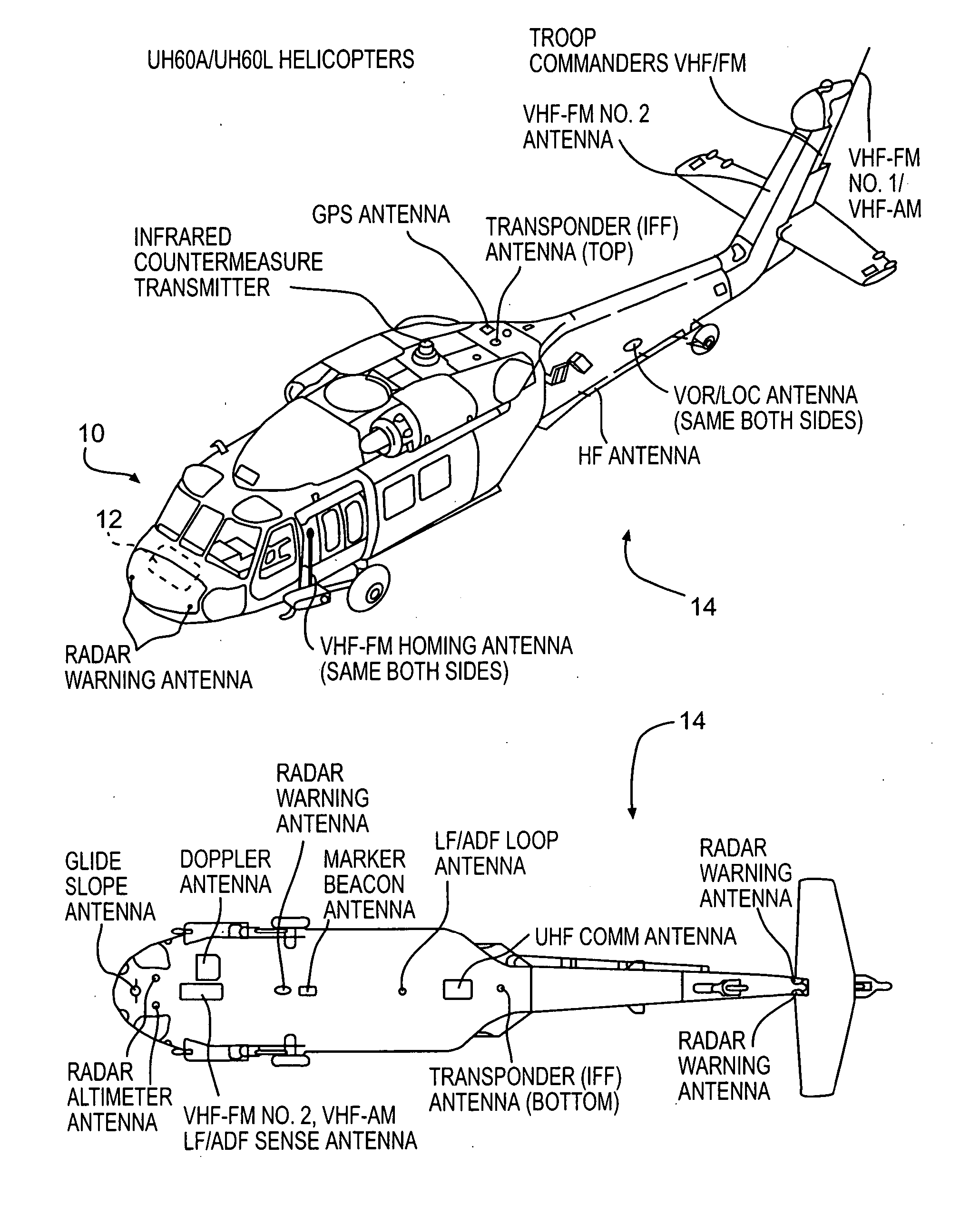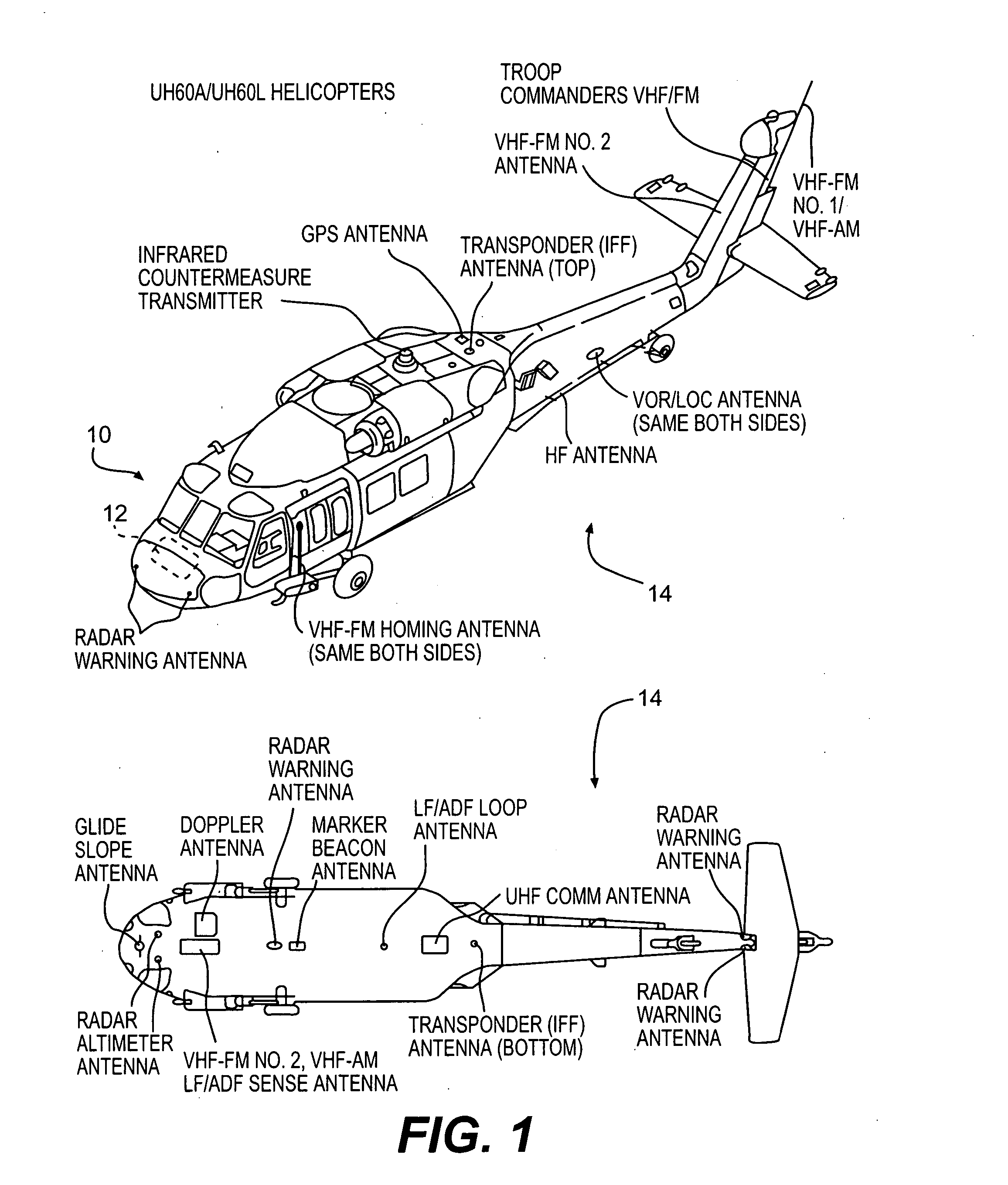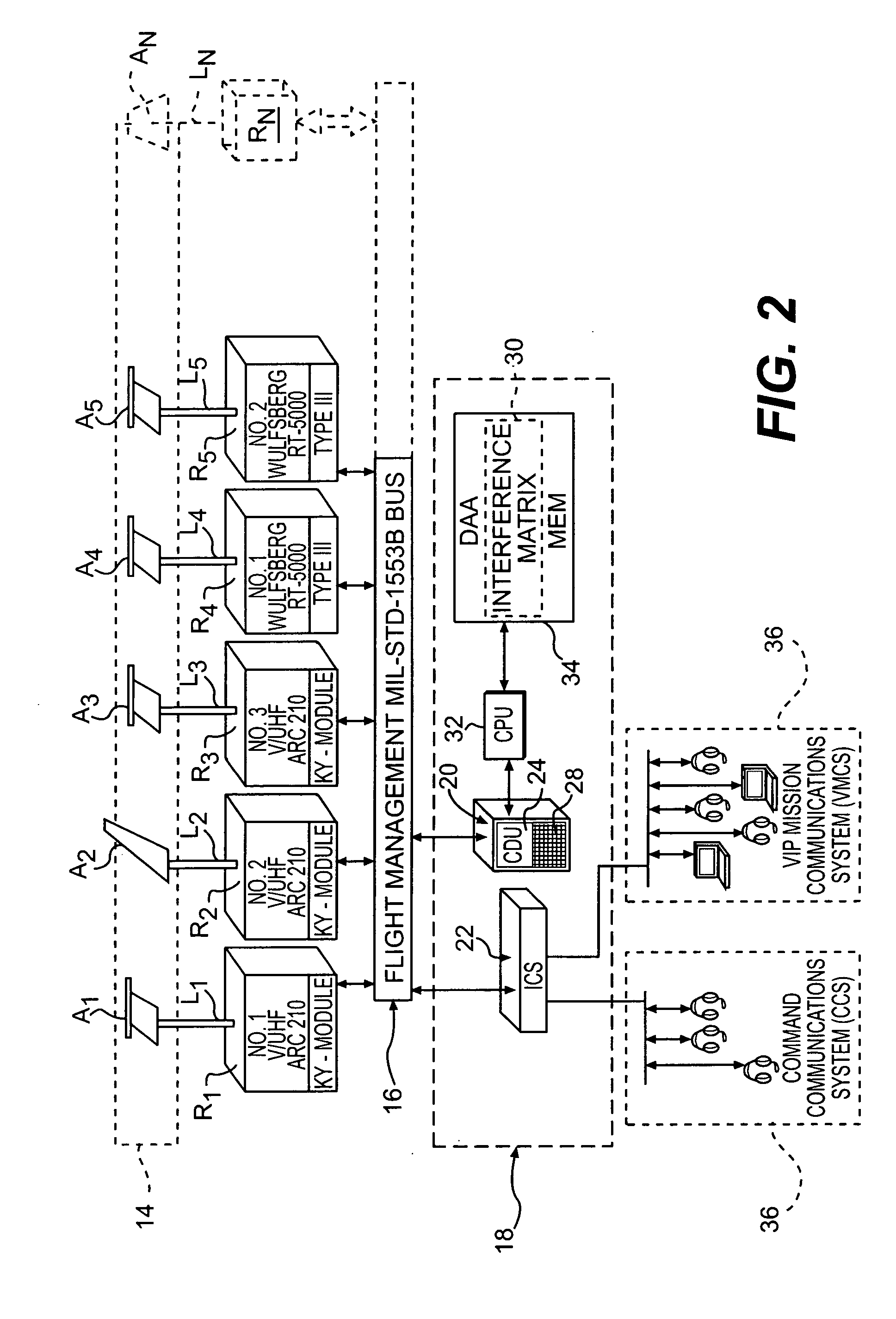Dynamic antenna allocation system
a dynamic antenna and allocation technology, applied in the field of communication systems, can solve the problems of increasing the radiated power of one radio, increasing the potential for mutual interference, and increasing the complexity of the antenna hardware design, so as to minimize the predicted interference, increase the electronic isolation, and maximize the isolation
- Summary
- Abstract
- Description
- Claims
- Application Information
AI Technical Summary
Benefits of technology
Problems solved by technology
Method used
Image
Examples
Embodiment Construction
[0016]FIG. 1 illustrates a general perspective view of an aircraft 10 having a communication system 12 with an antenna array 14. Although the present invention is described hereinbelow in terms of a particular aircraft configuration as illustrated in the disclosed embodiment, it should be understood that the present invention may be modified for use with other aircraft and ground systems and sites. It should be understood that the “communication system” as used herein includes other navigation, identification, alert systems and the like which have an antenna within the antenna array 14 (FIG. 1). Such other systems will also benefit from the present invention.
[0017] Referring to FIG. 2, the antenna array 14 includes a multiple of antennas A1-An each located in a particular location on the aircraft 10 (FIG. 1). Due to the fixed location, each antenna A1-An may also be subject to interference from, and subject other antennas, to interference. Each antenna A1-An provides dedicated tran...
PUM
 Login to View More
Login to View More Abstract
Description
Claims
Application Information
 Login to View More
Login to View More - R&D
- Intellectual Property
- Life Sciences
- Materials
- Tech Scout
- Unparalleled Data Quality
- Higher Quality Content
- 60% Fewer Hallucinations
Browse by: Latest US Patents, China's latest patents, Technical Efficacy Thesaurus, Application Domain, Technology Topic, Popular Technical Reports.
© 2025 PatSnap. All rights reserved.Legal|Privacy policy|Modern Slavery Act Transparency Statement|Sitemap|About US| Contact US: help@patsnap.com



